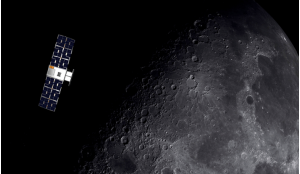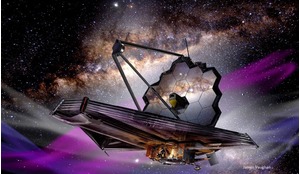The joint UK-US start-up Astraius is pioneering an innovative approach to its planned global launch operations which it aims to start from spaceports based in the UK. Astraius will use the C-17 Globemaster transport aircraft, a tried and tested system capable of launching payloads up to 1000 kg to a variety of low Earth orbit (LEO) inclinations, as an ‘air-launch’ platform. With more than 270 aircraft in service globally, the C-17 is flown by the Royal Air Force, US Air Force and numerous other nations around the globe and has been successfully used by the US government for over 40 horizontal launch missions. At this summer’s Farnborough International Airshow, ROOM Editor-in-Chief Clive Simpson held a joint conversation with three of the company’s leaders, Kevin Seymour (founder and CEO), George Zambellas (Chairman) and Andrew Turner (Chief Strategy Officer).
How is your offering different from what is in the market at the moment, aside from horizontal launch?
Kevin Seymour: We bring a unique set of capabilities to satellite launch. By leveraging a platform with over 270 aircraft globally, we can scale and position in ways vertical launch providers cannot. Fixed-based sites cannot optimise launch points and orbital positioning as efficiently as we can. Additionally, as an agile platform, we minimise weather delays that often impact vertical launch operations.
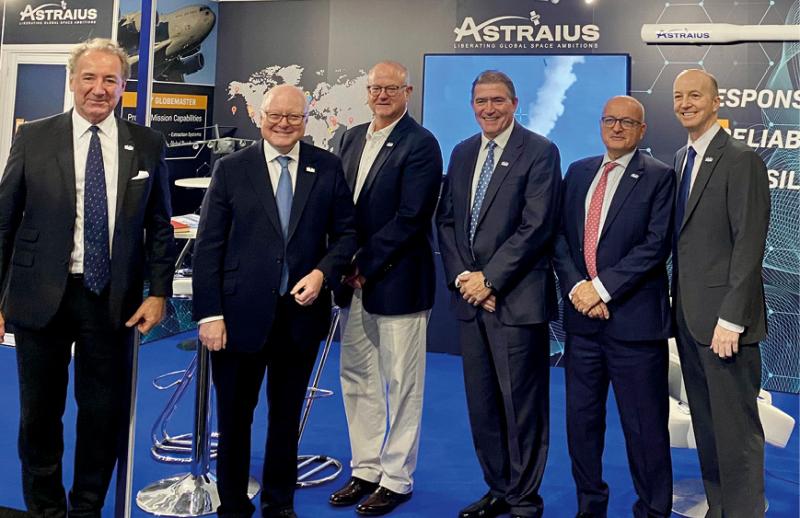 Astraius team on their stand in the space zone at the Farnborough International Airshow in July. Pictured (from left): Sir George Zambellas (Chairman), Stephen Watson (Chief Communications Officer), Dr Charles Williams (Chief Operations Officer), Kevin Seymour (Chief Executive Officer), Jonathan Stolerman (Chief Financial Officer) and Shane Clark (Chief Technical Officer).
Astraius team on their stand in the space zone at the Farnborough International Airshow in July. Pictured (from left): Sir George Zambellas (Chairman), Stephen Watson (Chief Communications Officer), Dr Charles Williams (Chief Operations Officer), Kevin Seymour (Chief Executive Officer), Jonathan Stolerman (Chief Financial Officer) and Shane Clark (Chief Technical Officer).
We have assembled a leadership team comprising financial, technological, and operational experts from both commercial and military environments. Most importantly, we leverage proven technology to mitigate risk for our customers. Our launch vehicle design integrates in-production motors, off-the-shelf components, and a delivery platform with over 40 successful launches. We are doing it differently to meet growing client demand for innovative solutions that minimise risk and development timelines.
George Zambellas: I would add that our solution’s strategic value is unparalleled. Innovative capability development is the most compelling differentiator of our solution.
By expanding the existing platforms’ mission set, we rapidly generate independent, sovereign launch capabilities that avoid years of R&D costs and represent no incremental cost to C-17 operating nations. In fact, when integrating military and commercial applications, our business model creates an operational subsidy for platform owners and operators.
Space is a complex operational environment, and we firmly believe our approach avoids the steep learning curve associated with ground-up development
In the current climate of fiscal austerity, our responsive launch solution is not just a cost-effective option but a smart investment. It enables satellite replacement, repair, refuelling, and inspection, thus providing a compelling value proposition by extending life, reducing waste, making space more sustainable, substantially safer and, most importantly, cost-effective.
What is different about your business model compared to other launch start-ups?
Kevin Seymour: Our business model is not just different, we believe it is also strategically sound. We’ve made important choices around our business model to develop industry-leading partnerships rather than pursuing capital-intensive vertical integration roadmaps.
Space is a complex operational environment, and we firmly believe our approach avoids the steep learning curve associated with ground-up development. Leveraging proven partners and technology accelerates speed to market, reduces cost and mitigates risk by integrating proven technology throughout the launch system.
 Astronaut Tim Peake with Kevin Seymour at Farnborough.
Astronaut Tim Peake with Kevin Seymour at Farnborough.
What about the key challenges for future development?
George Zambellas: Launch services for commercial and military purposes face significant challenges. Establishing spaceports, developing rockets, and ensuring consistent and successful launch demand require substantial financial resources, particularly when competing against countries with well-established and heavily funded space programmes. Securing investment and attracting top-tier talent to develop and operate these launch services further adds to the challenge.
Another critical challenge is navigating the regulatory and policy landscape. The UK, for example, must align its national policies with complex international treaties while fostering a regulatory environment encouraging innovation and growth in the launch services sector.
The key value propositions of responsive launch centre on timeliness and precision
Ensuring launch operations comply with safety standards, address space debris issues and mitigate environmental impacts is essential. Moreover, balancing commercial launch activities with national security needs, particularly for military purposes, adds layers of complexity. Continuous updates to the legal framework and international collaboration are necessary to manage these challenges effectively and ensure the UK’s competitiveness in the global space launch market.
Andrew Turner: Raising capital for space ventures poses significant challenges due to the high risks and substantial investments required for research, development and deployment. Space projects often involve long development timelines, uncertain returns and technical complexities, deterring traditional investors who seek quicker and more predictable returns. Additionally, the regulatory and policy landscape can be a barrier, as navigating international treaties and ensuring compliance with safety standards add to the complexity and cost.
However, the forecast for future space sector investment is promising. The rise of private space companies and the increasing interest from venture capitalists indicate growing confidence in the sector.
Governments recognise space’s strategic importance and the value of public-private partnerships (PPPs) to drive innovation and reduce costs. These partnerships leverage the strengths of both sectors, combining public resources and oversight with private sector efficiency and technological expertise. Such collaborations unlock new opportunities, make space ventures more viable, and accelerate critical infrastructure and capability development, making space more commercially attractive.
Could you explain the strategic importance of a country having an independent, sovereign launch capability?
George Zambellas: It’s hugely important. Securing an independent, sovereign space launch capability is vital for countries like the UK. It ensures national security, economic growth and technological advancement.
For the UK and its allies, a sovereign launch capability will allow control to be maintained over strategic satellite deployment, management and replacement, ensuring secure and timely access to space for military, intelligence and commercial purposes. Such independence reduces reliance on foreign launch providers, mitigating risks associated with geopolitical tensions and supply chain disruptions.
Economically, developing a domestic launch industry creates high-tech jobs, fosters innovation, strengthens current market advantages and attracts investment, positioning the UK as a competitive player in the global space market. Furthermore, it enhances the nation’s ability to participate in and influence international space policy and collaboration, ensuring the UK remains at the forefront of space exploration and technology innovation.
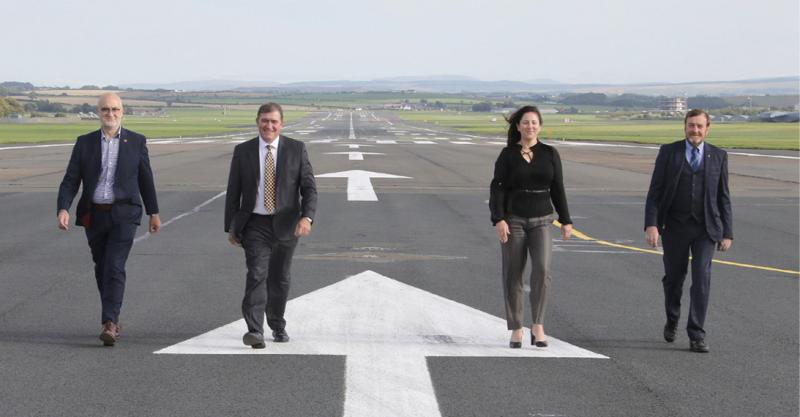 Kevin Seymour with Dr Mick O’Connor (left - Managing Director at Fire Arrow), Zoe Kilpatrick (Commercial Director at Glasgow Prestwick Airport) and Cllr Peter Henderson (Leader of South Ayrshire Council) after Astraius and Prestwick signed an MOU for future horizontal launch business.
Kevin Seymour with Dr Mick O’Connor (left - Managing Director at Fire Arrow), Zoe Kilpatrick (Commercial Director at Glasgow Prestwick Airport) and Cllr Peter Henderson (Leader of South Ayrshire Council) after Astraius and Prestwick signed an MOU for future horizontal launch business.
What are the key value propositions of responsive launch?
Andrew Turner: The key value propositions of responsive launch are timeliness and precision. We leverage mobile aircraft platforms to launch rockets at high altitudes rather than stationary vertical launch infrastructure.
Timeliness ensures that launches occur within optimal windows to efficiently achieve desired orbits and mission objectives while minimising delays, such as weather, that increase costs and logistical challenges.
Space projects often involve long development timelines, uncertain returns and technical complexities, deterring traditional investors who seek quicker and more predictable returns
Precision is accurately deploying payloads, such as satellites, to their intended orbits, reducing transit time to maximise orbital assets’ operational lifespans and functionality.
Together, timeliness and precision are force multipliers for return on investment, asset longevity, efficiency, reliability, and overall productivity, making these characteristics highly desired aspects of modern space operations.
Are you planning to use the Prestwick Spaceport exclusively or are you identifying alternative sites?
Kevin Seymour: Partnering launch technology and satellite manufacturing fosters collaboration between academia, industry, and government, leading to the development of cutting-edge technologies, robust supply chains, and innovative solutions across large, medium, and small enterprises. The economic ripple effect extends beyond the space sector, promoting growth in related industries such as engineering, data analysis, construction, housing and telecommunications.
The Prestwick Spaceport establishes a state-of-the-art launch facility, representing a synergistic element in the UK’s critical national infrastructure, and would position the UK as the global leader for horizontal launch services.
Andrew Turner: International partnerships are invaluable for cooperative spaceport development, providing diverse expertise, shared resources and enhanced innovation.
Collaborating with established space-faring nations such as the United States, Australia, Japan, and European Space Agency (ESA) members brings access to advanced technologies, extensive experience, and proven best practices in space operations. These partnerships facilitate cost-sharing and risk mitigation associated with developing and operating spaceports, making ambitious projects more feasible and economically viable.
Engaging with a broad spectrum of international partners strengthens diplomatic ties and enhances global cooperation in space exploration, ensuring that the benefits of space activities are widely distributed and contribute to global scientific and economic progress
International cooperation also fosters a collaborative environment that encourages the exchange of ideas and stimulates technological advancements, leading to more efficient and effective spaceport infrastructure.
Engaging with a broad spectrum of international partners strengthens diplomatic ties and enhances global cooperation in space exploration, ensuring that the benefits of space activities are widely distributed and contribute to global scientific and economic progress. We are proud to be a UK-headquartered company with a global reach!
The tricky question for any start-up launch service is timelines for launch. What can you tell us?
Kevin Seymour: It is always difficult to provide precise timelines due to the nature of these complex and innovative technical projects. Many launch companies fall into that trap, and actions speak louder than words to us.
Our priorities remain steadfast: building the right team, engineering the right solution and serving our customers with quality launch services rather than focusing on publicity. Whether it be our first or 51st launch, our goal will be to support client requirements with the highest quality standards and field-tested technology.
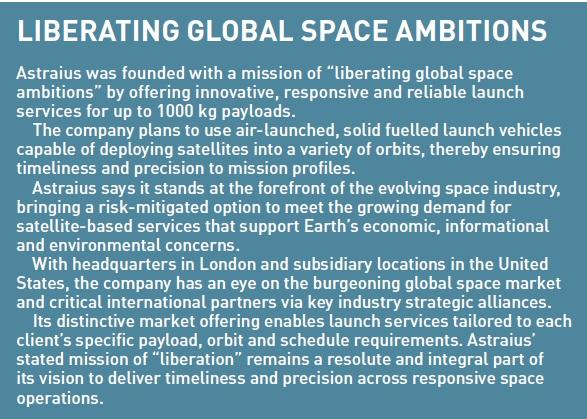
About the interviewees
Kevin Seymour, Founder & CEO, USA, has over 25 years of executive experience and board positions across the UK and US military and private sectors. He is an experienced programme manager and has led national and international defence and aerospace programmes for the UK and US Governments and private sectors, most notably the $8 billion UK aircraft carrier programme, now operating with joint UK and US forces. Prior to co-founding Astraius in 2020 he was lead for the Royal Navy’s Space Operations and has an excellent understanding of UK and US Space policy. Kevin is a former fighter pilot, with both US and UK operational squadrons, and a distinguished graduate of the UK Naval Academy.
Admiral Sir George Zambellas, Chairman (UK) was First Sea Lord and Head of the Royal Navy from 2013 to 2016. As an aeronautics and astronautics graduate, and an apprentice and engineer by training, and with transformational leadership expertise, he focused on delivering breakthrough innovation designing and delivering the largest maritime autonomous exercise in history. He has a passion for exploring, shaping and supporting fresh thinking within the top management of emerging technical sectors, and for leading-edge technologies such as autonomous vehicles, artificial intelligence, cyber resilience, big data processing, bioengineering, advances in quantum mechanics and satellite rocketry.
Air Marshal Andrew Turner, Chief Strategy Officer, served for 37 years in the Royal Air Force as a combat helicopter pilot and was the principal UK officer in the White House and Pentagon, Director of UK Military Operations, and latterly the RAF Deputy Chief and Chief Operating Officer. He has extensive service in all aspects of Aerospace, was involved in the creation of the UK Space Command and was close to the US Space Force formation. He is a Fellow at Oxford and was educated at Kings, Cambridge; Chennai, Exeter; and Open Universities and has degrees in strategy, international relations and cosmology.









